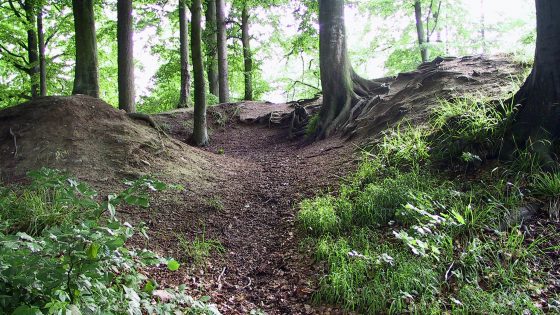THE TOWN WITH THE OLD BEECH TREES
Horse-drawn carriages, tufted ducks and magnificent countryside. A white palace, beech trees and gastronomy in beautiful green surroundings. Gråsten is a fairy-tale adventure.
Denmark has no mountains, but we have tall beech trees. In the woods around Gråsten, some of the trees rise almost 40 metres skywards. These are the Hingstbjerg beeches that started life back in 1732, and which can be found in the old Deer Park, which is part of the woodland that remains untouched. The Deer Park adjoins Gråsten Palace Lake, beside which the beautiful, whitewashed walls of the palace tower above the woods, like a rock ringed by rolling carpet of dark green trees. If you go out through the black gate that separates the palace gardens from the woods, you have a choice of paths to follow. Depending on which way you go, you might encounter “Karpeegen”, the “Hertogbæk” (Duke’s beech), “De Tre Søstre” (The Three Sisters), “Den Tykke Fyr” (The Fat Fellow) or “Boblegranen” (Bubble Spruce). Here in the woods, the trees have names and are an attraction in themselves.
If you head for the Magrethe Lake in May or June, you can see beautiful orchids blooming in the meadows surrounding the lake. This is home to tufted ducks, dormice and natterer’s bats. The dormouse, a small rodent that lives up in tree tops, is a protected and rare species in the border country. But in these woods, they can be seen if you remember to look upwards. Tufted ducks, with beady yellow eyes and white wing spas, on the other hand, are a common sight on the woodland lakes. In the winter months, in particular, Gråsten Palace Lake is filled with the distinctive-looking diving ducks that flock to the waters in their thousands.
If you get tired of walking, you might be lucky to get a ride in a horse-drawn carriage, which takes passengers for a spin in the woods around the lake in the summer months.
Near the palace you will see many memorials and monuments from the Second World War, as well as one particular sculpture standing on some sloping at the corner of Slotsgade and Fredensgade – a statue of Hans Christian Andersen’s Little Match Girl. The author stayed at Gråsten Palace in 1845. While he was at the palace, he wrote the short story called “The Little Match Girl”, which is the world-famous, heart-breaking tale of a poor little girl with dreams as vivid as the fire in her match sticks.




